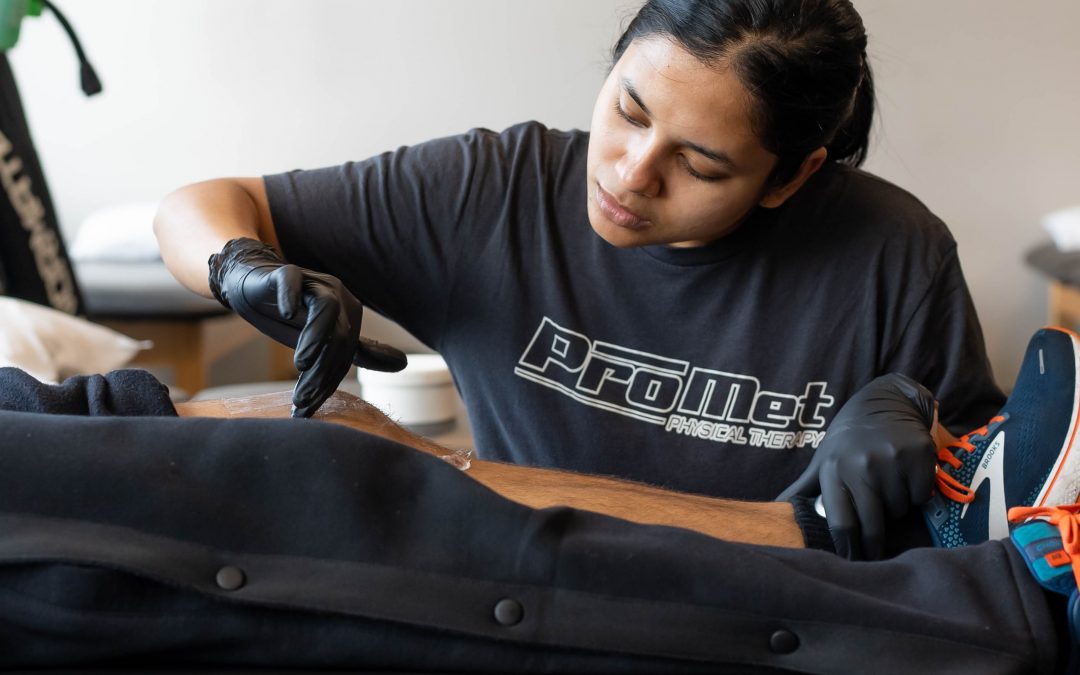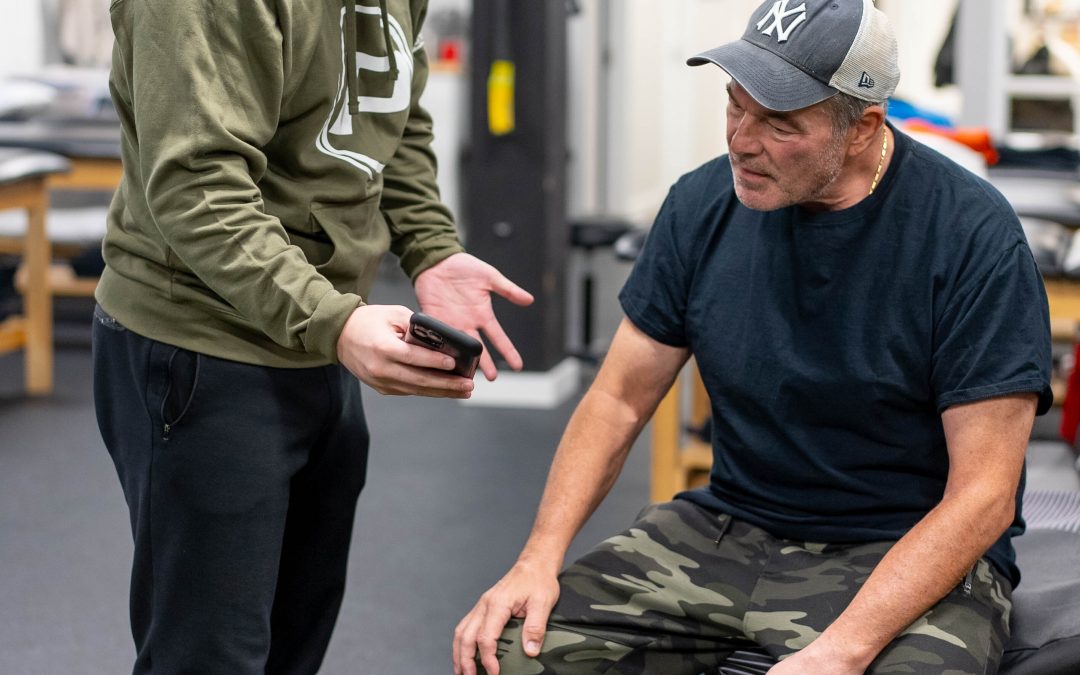Alan came to ProMet PT a month ago as a 50-year-old enthusiastic, amateur tennis player, with some nagging right shoulder pain during his overhand serve, but other than that felt like he was in the prime of his life. He played 4 weekly matches, but after complaining in private about his shoulder issues to a work buddy, and under his recommendation, he made an appointment with the Orthopedic Surgeon who worked on all the USGA Tennis Pros. On a follow up visit with the doc, the MRI scan revealed a superior labral tear. Intrigued and always proactive about his health, but also concerned about pondering over the possibility of surgery that might sideline him from the life he loved, Alan took some more advice of a different friend who knew we worked with some of the top athletes in Queens and swore that if there was anyone who could help him out, it would be us.
 We got to know each other during our first meeting, as Alan got me up to speed on the history of his shoulder pain, and that according to him, seemed like it was getting worse after he started seeing the surgeon. No doubt we both knew that he was one of the best surgeons in NYC and had confidence in his capabilities, but Alan wondered that if he had just left it alone, maybe he’d still be playing tennis. Right off the bat, I brought up an important study I knew of that involved 53 middle-aged adults, that had no pain and no history of shoulder injuries. Their MRIs revealed that superior labral tears were identified between 55% and 72% of shoulders of these individuals. Interestingly, these findings appeared regardless of factors like age, sex, physical job demands, or their involvement in recreational or competitive sports.
We got to know each other during our first meeting, as Alan got me up to speed on the history of his shoulder pain, and that according to him, seemed like it was getting worse after he started seeing the surgeon. No doubt we both knew that he was one of the best surgeons in NYC and had confidence in his capabilities, but Alan wondered that if he had just left it alone, maybe he’d still be playing tennis. Right off the bat, I brought up an important study I knew of that involved 53 middle-aged adults, that had no pain and no history of shoulder injuries. Their MRIs revealed that superior labral tears were identified between 55% and 72% of shoulders of these individuals. Interestingly, these findings appeared regardless of factors like age, sex, physical job demands, or their involvement in recreational or competitive sports.
A few questions later, followed quickly with laughs consistent with impression of psychological safety, Alan was able to reason with me that he was certain that tears such as his are more likely normal age-related changes, rather than indications for aggressive interventions. Afterall, he wasn’t exactly an average citizen, Alan could ball! Utilizing evidence in clinical judgment and treatment decisions, emphasizing that not all abnormalities on an MRI warrant surgical responses, Alan was at ease in his decision to hold off on surgery and decided to work a few weeks with us at the Glendale location in the Atlas Mall.
 Just because Alan had a positive MRI finding for a labral tear, didn’t mean that he needed surgery. Alan is back on the court after 9 weeks of progressive and targeted core work, shoulder strengthening and athletic performance training and last we spoke, is ready to take on anyone, 5 days a week! Through life, our bodies take a beating- whether we play at the level of Alan or in the sport of life, his story underscores a crucial point- advanced imaging techniques often reveal more than we anticipate. ProMet Physical Therapy and Athletic Performance knows the importance of giving and receiving informed, judicious medical advice and the need for physicians and clinicians to consider test findings alongside of a patient’s clinical presentation, so that as a team we can contribute to our patients making the biggest advancements with the least amount of change, and ultimately the safest, least expensive, and best treatment choices for them.
Just because Alan had a positive MRI finding for a labral tear, didn’t mean that he needed surgery. Alan is back on the court after 9 weeks of progressive and targeted core work, shoulder strengthening and athletic performance training and last we spoke, is ready to take on anyone, 5 days a week! Through life, our bodies take a beating- whether we play at the level of Alan or in the sport of life, his story underscores a crucial point- advanced imaging techniques often reveal more than we anticipate. ProMet Physical Therapy and Athletic Performance knows the importance of giving and receiving informed, judicious medical advice and the need for physicians and clinicians to consider test findings alongside of a patient’s clinical presentation, so that as a team we can contribute to our patients making the biggest advancements with the least amount of change, and ultimately the safest, least expensive, and best treatment choices for them.
Changing The Face of In Network PT One Moment at A Time.
By Franklin Moore-Present
Cited: Schwartzberg R, Reuss BL, Burkhart BG, Butterfield M, Wu JY, McLean KW. High Prevalence of Superior Labral Tears Diagnosed by MRI in Middle-Aged Patients With Asymptomatic Shoulders. Orthopaedic Journal of Sports Medicine. 2016;4(1).




